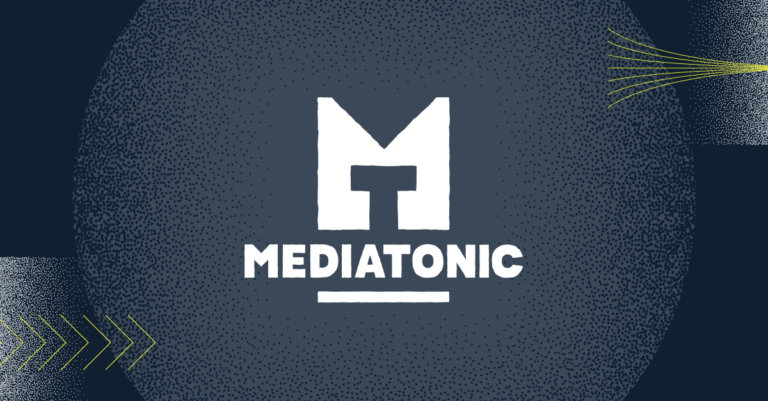
Endeavor Streaming Optimizes Observability Cost & Data




Ease of integration was a huge factor for us in getting started with Logz.io
Customer
Endeavor Streaming
Industry
Technology
Headquarters
New York, NY
On a day-to-day basis, Claudio Ferrete, Vice President of Platform Development at Endeavor Streaming, balances operation of the company’s leading digital video platform, at scale, along with meeting all the company’s established level of application and infrastructure service level requirements—ensuring everything is performing as expected.
At the same time, Endeavor Streaming must be able to confidently build on top of their platform and continue to evolve their product.
“That delicate balance of operability and development is a big focus for me,” Claudio says.
Operating and innovating at scale is one of the biggest challenges Endeavor Streaming faces. The organization dedicates significant resources to ensuring that its platform has what it takes to accommodate all the different use cases they need to support.
“We have customers all over the globe, and different regions have very different types of capabilities when it comes to cloud computing, availability to network connectivity,” Claudio says.
The expert said his team is laser focused on ensuring that engineering resources are concentrated on building and operating its own products, versus maintaining tools and solutions to support its goals. As a result, choosing the right partners and the right tools to make the most of resources and deliver low cost of ownership remains critical.
These are the specific reasons why Endeavor Streaming employs Logz.io to address its needs around log aggregation, metrics, platform engineering and Kubernetes monitoring.
Endeavor Streaming’s Data Challenges
Claudio notes that Endeavor Streaming’s application and platform are divided into multiple components with well-defined purposes, with functionality designed to ensure the right visibility and insight into each component. That includes maintaining a high-level view of how the platform is behaving as a whole, and also having the ability to deep dive into each component to dissect and triangulate the data needed to understand any issues that are detected.
“Having the ability to deep dive is crucial for us because due to the complexity of our platform… there’s so many different services, so many different areas and code bases that can generate problems. It’s essential for us to be able to pinpoint the origin of issues as quickly as possible…making sure that everything is performing as we need,” Claudio says. “This needs to be, again, at a global scale; observability is key for us to be able to deliver a quality experience for our users and our partners.”
Keeping production issues consistently low and manageable is critical for Endeavor Streaming. Claudio’s team also grapples with the additional complexity in that their product is never truly “finished.”
“We’re not operating on a finished code base that is only operating in maintenance mode,” Claudio says. “We do a lot of development, constantly iterating on our product, constantly adding new features, constantly chasing for a better market fit. That comes with a lot of development and change. So beyond the day to day operability of the platform, we need to make sure that we understand how we’re impacting the platform with the new changes we’re introducing. That is also key. So it’s not just scale, it’s not just performance. It’s also introducing changes safely, securely, and confidently that we’re not deteriorating our customer experience.”
Why Endeavor Streaming Chose Logz.io for Log Management and More
Early in their product life cycle, Endeavor Streaming understood they needed strong log aggregation and monitoring to support the distributed architecture they desired. This required a platform to collect logs and information visible to engineering and support teams, and they felt picking Logz.io was the easiest solution
“Ease of integration was a huge factor for us in getting started with Logz.io,” Claudio says. “That got us off to an incredibly great start, and put us in a great position.”
He adds that using Logz.io automates manual tasks around log management that allows his team to focus on other things.
“It just works exactly as we need it to,” he says.
As with most businesses, Endeavor Streaming must strive for cost efficiency, especially around use of IT infrastructure. Logz.io has been part of how they get there.
“Logz.io helps us in making sure that the quality of the data and the volume of data that we’re sending is what we need”
Claudio Ferrete
Claudio says, adding that features such as Logz.io’s unique Drop Filters ensure they can fine-tune what’s coming into the platform, and what’s not.
“We can actually load data from previous retention periods and go back when needed to do any kind of investigation or retrospective,” Claudio adds. “That’s also a widely-used feature that gives us confidence that at any point in time, we can very quickly go back in time and look at data, how things used to look in whatever time period there was before. So we leverage those features quite extensively and they’ve very valuable to us.”
In engaging with Logz.io, Claudio said he feels a sense of true partnership for Endeavor Streaming, including his experiences working with the Logz.io Customer Success team.
“The feature set is there, but the team and how we collaborate together as two different organizations that are trying to achieve a common goal has always been excellent,” Claudio says. “There’s always a lot of desire for both parties to make everything work as seamless as possible. Whenever we have the challenge of scale or complexity, [Logz.io is] right there to help us…We have to be very flexible and we find that with Logz.io we’re able to find a partner that is helping us be flexible to the level that we need.”
How Logz.io Meets the Mark for Endeavor Streaming’s Metrics Usage
Endeavor Streaming is also expanding their observability practices by increasing its adoption of metrics, and Logz.io has supported that element of its strategy.
“We’re heavily investing in–and increasing–our level of metrics, and not just in terms of quantity but also in quality,” Claudio says. “We had, from the very beginning, a very high-level, macro view in terms of telemetry. We want the ability to deep dive, go into the detail and telemetry of the different components, including at the code level…We monitor the performance of specific queries, because they’re so fundamental to our performance, that we have to be very aware of how these individual micro level items are performing because they are very significant to the overall platform experience.”
For Claudio’s team, the goal is to invest in quality for metrics, not just quantity. They’re attempting to shift from a high-level macro view of telemetry to one that goes into deep detail at the function level. Logz.io’s capabilities have made the process easier for Endeavor Streaming.
“The amount of documentation provided and the standard library components made available for us allows us to very quickly integrate with our code base is really helpful,” Claudio says. “This lets us start shipping metrics very easily and very quickly. It allows us to move on from an experimentation stage where we’re understanding how the product works to very quickly being in a position where we’re actually shipping production metrics and we’re actually using the platform in production.”
“Endeavor Streaming is also relying heavily on Logz.io’s pre-built dashboards for metrics as a starting point, and quickly adapting them to meet their unique requirements.”
Claudio Ferrete
The ability to avoid starting from scratch and deploy the platform in its production environment faster thanks to the pre-built dashboards was another significant benefit.
With logging and metrics work underway, Claudio says Endeavor Streaming would like to migrate their current “home-brewed” solution for distributed tracing into Logz.io’s Distributed Tracing solution.
Endeavor Streaming’s Platform Engineering Emerges with Logz.io’s Help
Logz.io has also been an important partner in advancing Endeavor Streaming’s practices and tooling as related to its platform engineering strategy. Claudio gave an example of the company’s recent move into the Kubernetes space, adding Kubernetes, logging and Kubernetes telemetry metrics into the Logz.io platform.
“Integrating those was a trivial exercise using the documentation and charts provided,” Claudio says. “The solution provided by Logz.io allows us to very quickly be in a production-ready state for something that was a completely new platform for us. It could not be an easier experience for us.”
Endeavor Streaming requires an approach that makes it simple to understand what’s happening at all times and how everything is performing. It must adapt to the conditions of the clusters and the workloads being run, and give them a comprehensive view of all these different aspects, starting at the host level, the cluster level, the node level, and then within the node itself.
It’s critical to have that telemetry of the code they’re running and each of these pods and making sure that they have all these layers well understood and clearly visible to them so they can very quickly understand how they’re behaving, understand how they’re performing, and if there are problems, triangulating and fixing them, he said.
Open Source Strength a Key Benefit for Endeavor Streaming’s Partnership with Logz.io
Claudio says Logz.io’s embrace of open source for tooling, including using Prometheus for the metrics service’s back end, makes Endeavor Streaming feel even more comfortable with its technology stack around observability.
“We believe in finding and using the right tools for the job, and some of those tools are open source,” Claudio says. “We leverage open source when building our own product. But we also contribute back.”
Claudio adds that his company open-sources some of their code and contributes to other projects in the form of code, comments, of “however we can help.” In Logz.io, Endeavor Streaming knows they have a partner who believes in open source as equally as they do.
“We know that everything we’re using there, and everything we’re learning and investing in, is not going to get us to a state of vendor lock-in any way, but it’s actually contributing to a wider ecosystem,” Claudio says. “That knowledge is very transferable in both ways. It’s not just people that join that have experience in different companies that very easily transition into using Logz.io, but also when they move on from collaborating with us, they will take that experience and they make it very transferable to their next roles.”


